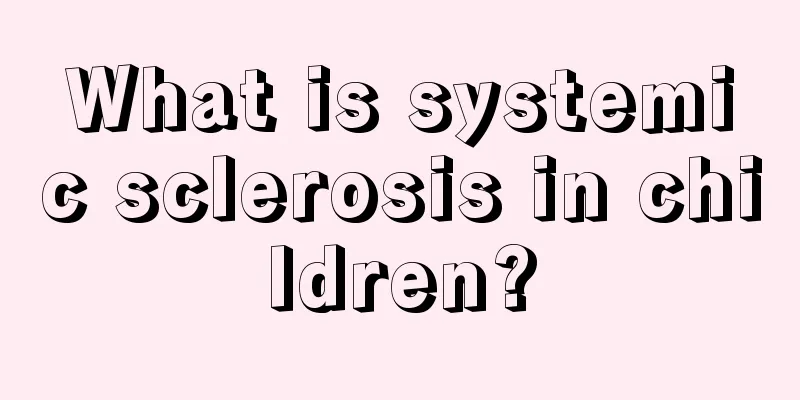What to do if your child gets redness and swelling after vaccination

|
Is it normal for children to have redness and swelling after vaccination? Many parents will have this problem. Many friends will find that their children’s arms are red and swollen after getting vaccinations. So what causes this? What are the dangers? Let’s take a look with the editor and see how we should deal with such problems. It is normal for babies to experience redness, swelling, fever, hard injection sites, and anorexia after vaccination. These reactions will usually disappear naturally after two days. However, if the fever is over 38.5 degrees, measures should be taken (such as taking zinc taurate granules, one pack divided into three times) to ensure the healthy development of the baby's brain; if the fever is below 38.5 degrees, physical cooling can be adopted, such as wiping the body, taking a bath, drinking plenty of water, etc.; if there is redness, swelling, or hard and itchy needle wounds, dry ice wrapped in a hot towel can be used to bind the arms three times a day. Local reactions: usually occur about 24 hours after vaccination. Redness, swelling, heat, and pain may occur at the injection site. Severe reactions can cause inflammation of nearby lymph nodes and lymphangiitis. The range of swelling and nodules at the injection site is divided into mild, moderate and severe. A mild reaction is one with a diameter of less than 2.5 to 5 cm, while a reaction larger than 5 cm is a severe reaction that can last for hours or days. If the local redness and swelling are severe, you can apply hot compress (hot compress is strictly prohibited for redness and swelling after BCG vaccination). Once in the morning and once in the evening, each time for about 5 minutes. And you should change your underwear frequently to avoid infection after ulceration. If there is local infection, apply gentian violet solution. Systemic reaction: The first symptom is fever, with mild fever ranging from 37 degrees Celsius to 37.5 degrees Celsius and moderate fever ranging from 37.6 degrees Celsius to 38.5 degrees Celsius. Temperatures above 39 degrees Celsius are considered severe. In addition, some children may experience symptoms such as headache, dizziness, general weakness, chills, nausea, vomiting, abdominal pain, and diarrhea. The above reactions generally subside within 24 hours. Rarely lasts more than 3 years. If the fever is severe, you can take antipyretics. Generally, other symptoms will disappear on their own once the body temperature returns to normal. If the high fever persists or there are other abnormalities, the patient should be sent to the hospital for diagnosis and treatment in time. Strengthen care after vaccination: (1) Get enough rest and avoid running or jumping too much. (2) Keep the injection site clean and do not scratch it with your hands. (3) Do not eat irritating foods, such as garlic, chili peppers, etc. (4) Drink more water. (5) Parents should observe their children’s reactions after vaccination at any time. Through the above introduction, do you know how to prevent children from having redness and swelling after vaccination? Children are important members of each of our families, and children’s health issues are even more important. We must always pay attention to children’s health. When children have redness and swelling after vaccination, we must go to the hospital for examination and treatment in time to avoid harm. |
<<: What to do if the child has phlegm in the throat and can't cough it out
>>: How to treat scrotal effusion in children
Recommend
How to treat dermatitis in babies?
Dermatitis is a common disease in children. Some ...
Can children take a bath when they have chickenpox? What are the precautions?
The older generation would not allow their childr...
9 porridge soups to help moms easily deal with children's constipation
What should I do if my baby is constipated? Mom m...
Daytime sleep time for two and a half year old baby
Mothers are relieved to see their babies grow day...
Symptoms and treatment of dysentery in children
Dysentery is a common gastrointestinal disease in...
Red pimples on baby's face and hands
Babies' constitutions are naturally weaker th...
What is the height standard for a four-year-old child?
It is said that children are cuter when they are ...
What causes migraine in children?
Migraines mostly occur in adults, but children ca...
Can children drink wine?
In daily life, we often see that some parents who...
How to treat children's teeth grinding?
Teeth grinding is a common symptom in children wh...
What to do if your child has a fever or diarrhea
Fever and diarrhea in young children have always ...
How to treat hunchback in children?
Nowadays, there are more and more cases of childr...
What to do if your baby has candida infection
Candida is suitable for a wide range of people. B...
What to do if your child catches a cold and has a fever
Children catching cold and having fever is an ine...
What are the symptoms of stomach pain in children?
If we accidentally have stomach pain, how should ...









